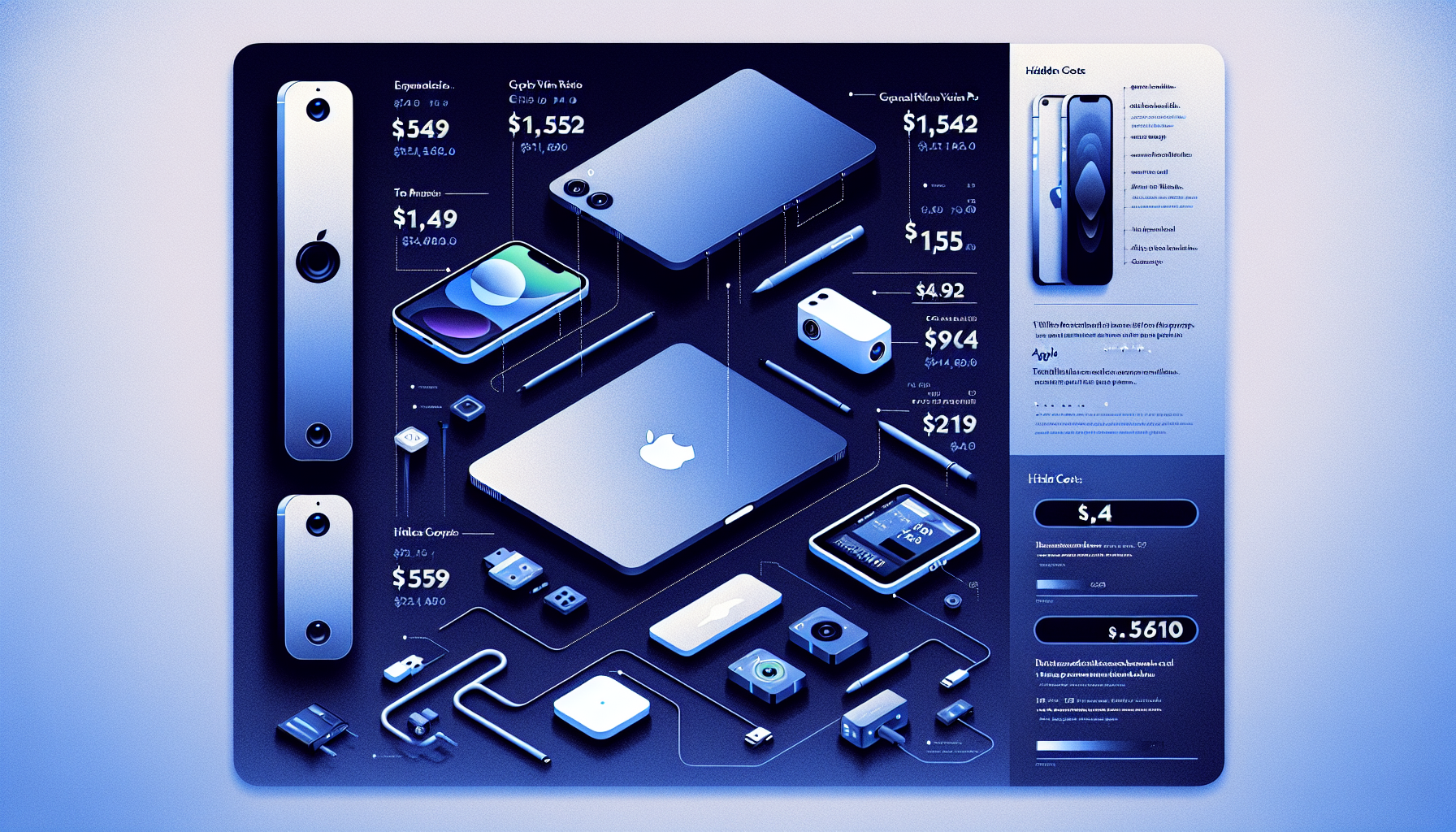 ## Exploring the Actual Cost of Apple Vision Pro: A Detailed Examination of Component Costs
## Exploring the Actual Cost of Apple Vision Pro: A Detailed Examination of Component Costs
Apple’s Vision Pro, an innovative device that melds the real with the virtual, has been the buzz of the tech sector since its launch. The headset is priced starting from $3,499, which can increase by a thousand dollars based on its configuration. But what is the true production cost of this advanced gadget? Research company Omdia has given an approximation of the cost of the materials employed in each Vision Pro.
Micro-OLED Displays: The Most Expensive Piece
The Vision Pro utilizes two micro-OLED displays, a display for each eye, to introduce the real and virtual worlds to the user. As per Omdia’s Senior Research Director, David Hsieh, these twin displays are the priciest part in the headset, costing $456. A supplementary external display for EyeSight costs approximately $70. This implies that the device’s displays constitute around 35 percent of the overall cost of the device’s materials.
Silicon: The Second Highest Priced Component
After the screen comes silicon. The total amount for the M2 system-on-a-chip and the R1 processor is predicted to be $240, constituting a bit over 15 percent of the overall price of the material components of the device.
The Complete Bill of Materials
Including all components, Omdia predicts the total material cost for each Vision Pro to be around $1,542. However, it’s critical to note that this amount doesn’t encompass manufacturing, shipping, or marketing prices, nor does it consider research and development costs.
The Pricing Narrative: Beyond Just the Components
Though one may be tempted to infer that Apple earns a profit of $1,957 on each Vision Pro sold at $3,499, this is certainly a misconception. The materials cost is merely a part of the pricing tale. Additional elements like manufacturing, shipping, marketing, and research and development expenses significantly influence the final price as well.
Historically, Apple has kept considerable profit margins on its hardware items like the iPhone. Whether the Vision Pro follows this pattern or turns out to be a deviation is yet to be confirmed. Nevertheless, analysts anticipate some of these costs to decrease over time.
Conclusion
The cost of the components incorporated in Apple’s Vision Pro provides a sneak peek into this tech colossus’s pricing policy. Although the materials cost is a fundamental component of the final price, it’s crucial to bear in mind that other factors also impact the cost. As technology progresses and production methods grow more proficient, we can anticipate some of these costs to decline over time.
Q&A
Q: Which is the priciest component in the Vision Pro?
A: The most costly piece in the Vision Pro is the twin micro-OLED screens, valued at $456.
Q: What is the total materials cost for each Vision Pro?
A: The comprehensive materials cost for each Vision Pro is projected at approximately $1,542.
Q: Does the materials cost incorporate manufacturing and shipping costs?
A: No, the materials cost excludes expenses for manufacturing, shipping, or marketing. Research and development costs are also not factored in.
Q: What is Apple’s profit on each Vision Pro sold?
A: Determining the exact profit Apple may realize on each Vision Pro sold is complex as it involves numerous factors, including manufacturing, shipping, marketing, and research and development expenses.
Q: Is there a possibility for the price of Vision Pro components to decrease in the future?
A: Analysts anticipate that some of these expenses will diminish over time as technology progresses and production techniques become more streamlined.